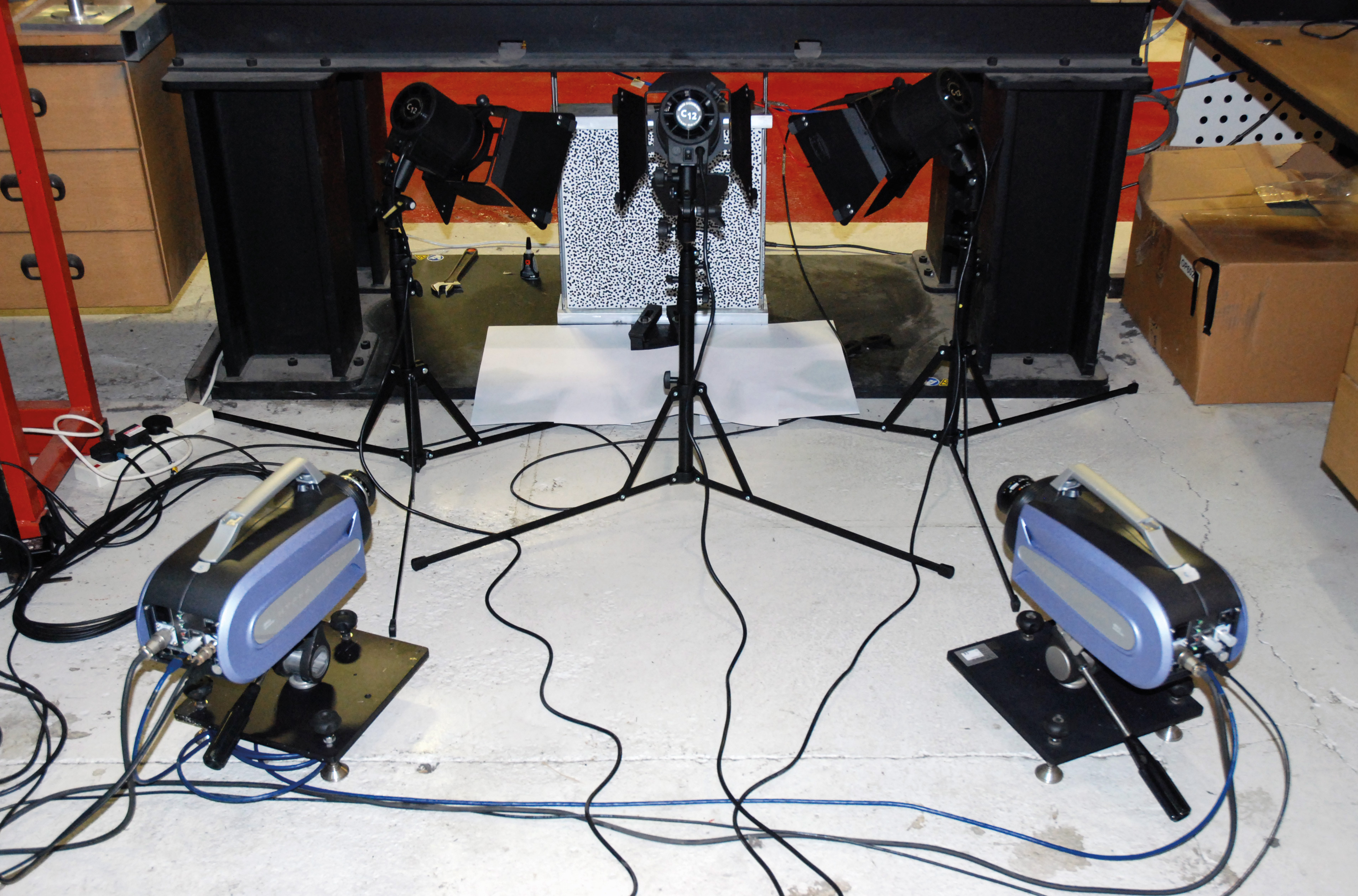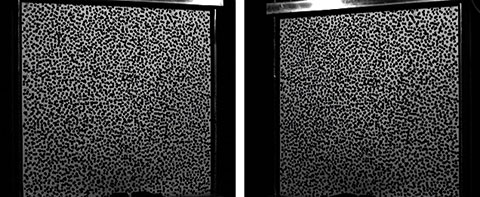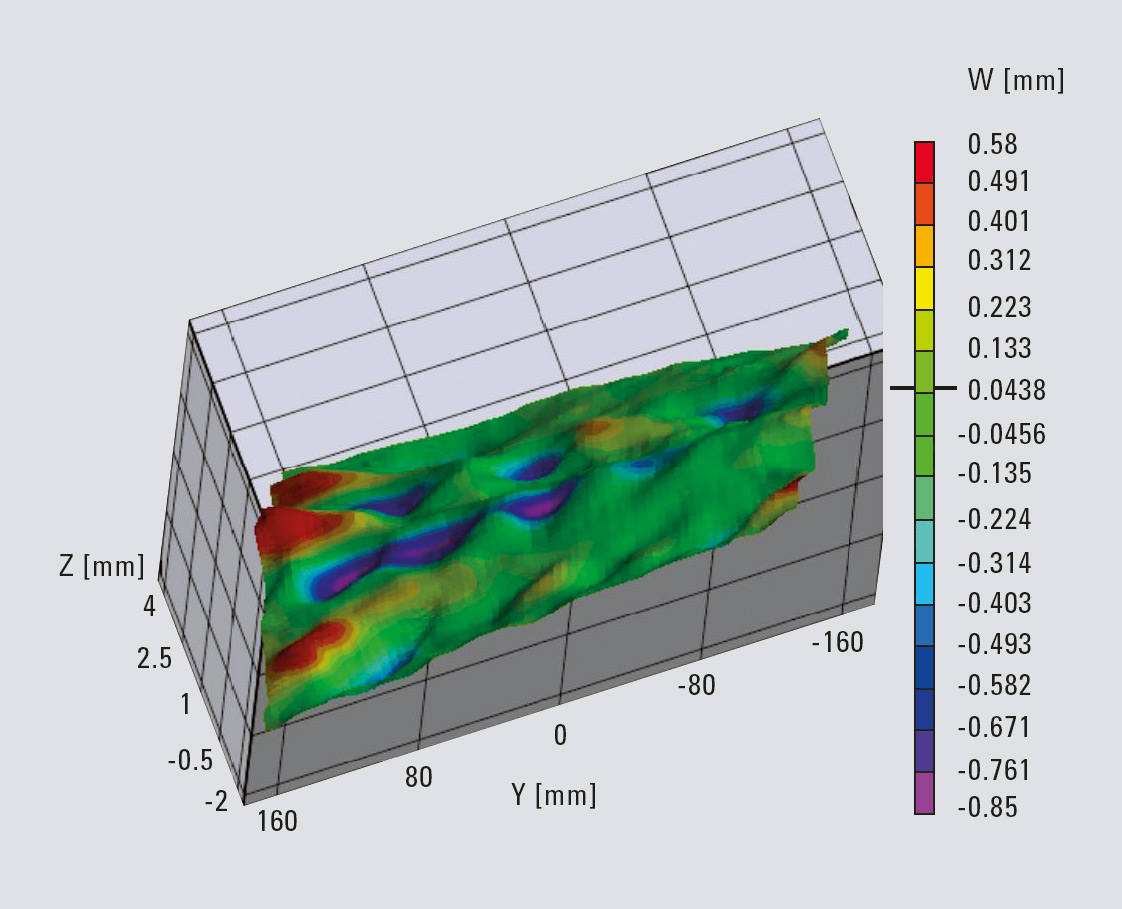Digital Image Correlation (DIC) helps the aircraft industry
HPV-2 high-speed camera
 Figure 1: Two HPV-2 cameras at 45 degree stereo angle viewing a 30 cm square stiffened aluminium panel which is impacted from above using a drop weight tower
Figure 1: Two HPV-2 cameras at 45 degree stereo angle viewing a 30 cm square stiffened aluminium panel which is impacted from above using a drop weight tower
Digital Image Correlation (DIC) has been used by physicists and material scientists for many years and is now finding new applications in high speed imaging as a method of image analysis. Shimadzu’s HPV-2 camera pushes the boundaries of this technique with its ability to image high-speed events with a microsecond time scale.
This application is interesting for the aircraft industry, which is always looking for innovation in materials withstanding highest impacts and loads while reducing energy consumption and costs.
Mathematical treatment of DIC images is capable of measuring very precisely the position and shape of an object in two or three dimensions (depending on the number of cameras used) in order to help understand how the object or material under investigation behaves.
 Figure 2: A pair of raw images from the HPV-2 cameras showing the speckle pattern on the aluminium sample
Figure 2: A pair of raw images from the HPV-2 cameras showing the speckle pattern on the aluminium sample
Stiffened panel under extreme flight conditions
Two HPV-2 cameras were used recently at Cardiff University School of Engineering, UK to study a stiffened panel under high levels of stress. A drop weight tower was used to impact the panel, simulating the high stress conditions found on airframes under extreme flight conditions. The Shimadzu HPV-2 cameras recorded the impact at 125,000 frames per second.
The camera images were imported into the DIC software provided by Correlated Solutions Inc., Columbia, South Carolina/USA, which analyzed each pair of frames from the two cameras to determine the precise distortion of the panel as it was subjected to high speed dynamic loading.
In this experiment the panel was painted with a random “speckle” pattern (random black dots on a high contrast white background).
The DIC software scanned the speckle pattern and tracks the movement of the dots from one frame to the next in order to measure movement and distortion of the panel. Since two cameras were deployed, three-dimensional information could be derived from the images.
 Figure 3: Result of a stereo pair of images from the HPV-2 cameras after image processing by the DIC software. Note: impact point from the drop weight tower is on the left of the image.
Figure 3: Result of a stereo pair of images from the HPV-2 cameras after image processing by the DIC software. Note: impact point from the drop weight tower is on the left of the image.
Powerful tool for engineering scientists
The HPV-2 camera’s design makes it particularly suited to DIC measurements. Each image is recorded using the same light-sensitive areas (pixels) on the In Situ Image Storage CCD (ISIS CCD), meaning that no relative distortion of the images occurs from frame to frame. Also, up to four cameras can be synchronized ensuring that the event is recorded by all cameras simultaneously.
The unique benefits of the Shimadzu HPV-2 camera coupled with the analytical techniques of DIC make this combination of equipment a powerful tool for engineering scientists studying new materials under transient dynamic loading conditions.
Acknowledgements:
Speyer Photonics Ltd.
Brian Speyer
brian@speyerphotonics.com
Correlated Solutions Inc.
Hubert Schreier
schreier@correlatedsolutions.com
Cardiff University.
Mark Eaton
eatonm@Cardiff.ac.uk